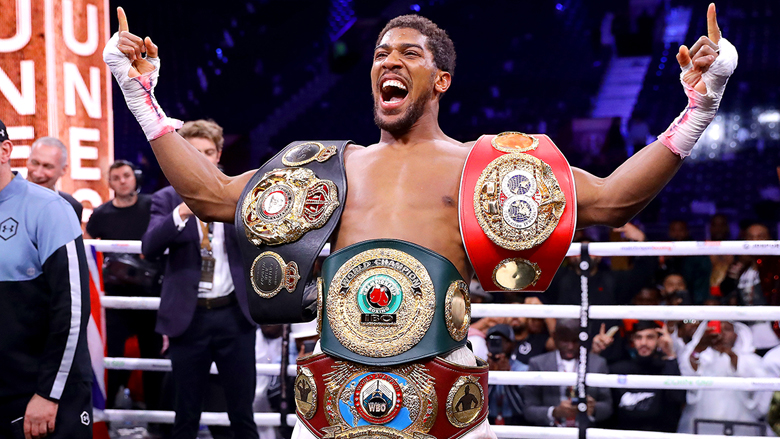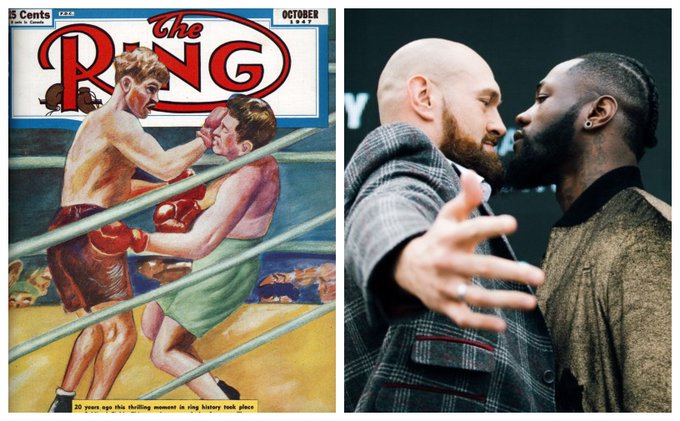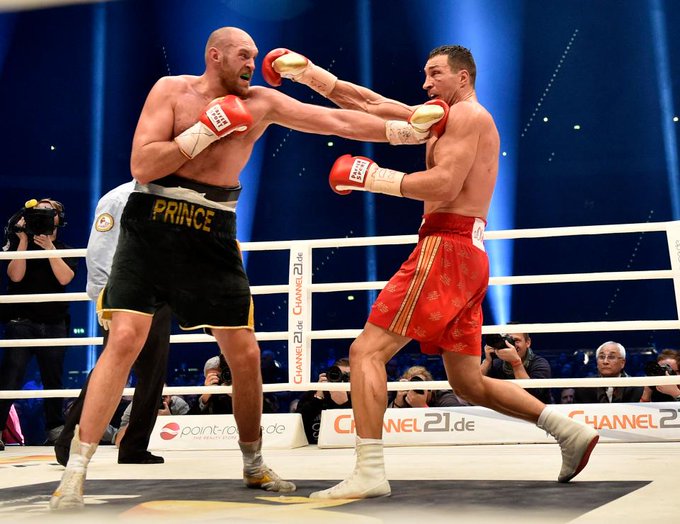
The iconic sport of boxing has a long and storied history. From incredible comebacks to long championship reigns, huge upsets and all the amazing stories of how the sport turned a person’s life around, there’s nothing quite like the world of professional boxing.
Unfortunately, the current state of boxing’s complicated and somewhat absurd championship system is much less desirable. Even for the sport’s biggest fans, it can be a muddled and confusing mess.
To help clear those muddy waters up, here is a complete guide to professional boxing’s championship system.
Why Are There So Many World Champions in Boxing?
Boxing has 17 total weight classes, ranging from 105-pound strawweight fighters to larger-than-life heavyweights who weigh in without limit before their matches.
Given that information, most mainstream sports fans would probably expect there to be no more than 17 world champions in professional boxing at any given time.
Instead, there are many more than just 17 fighters who have legitimate claims to be world champions.
How can this be?
Well, it’s complicated.
The short answer is that professional boxing does not have a single overarching governing body, so over time, and for various reasons, professional boxing has accumulated and accepted multiple sanctioning bodies and ratings panels.
These organizations operate independently of one another and award title belts at their own discretion for each of boxing’s 17 weight classes.
Boxing’s 4 Major Sanctioning Bodies
There are four major sanctioning organizations in the world today that are generally accepted in professional boxing to offer legitimate world titles. They are the International Boxing Federation (IBF), World Boxing Association (WBA), World Boxing Council (WBC) and World Boxing Organization (WBO).
Outside of these four major sanctioning organizations exist other sanctioning bodies, too. But titles offered by those bodies don’t hold as much weight with boxing fans, media and historians.
Moreover, the IBF, WBA, WBC and WBO are the four sanctioning bodies acknowledged by the International Boxing Hall of Fame. These four bodies also recognize each other as the four major sanctioning organizations.
The Ring, TBRB and Lineal
Additionally, there are two separate but similar ratings panels of note: The Ring magazine and the Transnational Boxing Rankings Board (TBRB).
There is also a conceptual honor bestowed on fighters not managed by any single organization called “lineal”. Lineal championships were born out of the problem of having so many sanctioning bodies and ratings panels created in the first place.
So in addition to the IBF, WBA, WBC and WBO titles, The Ring, TBRB, and Lineal championships all exist and are considered to be legit world championships by most who follow the sport.
Follow the Heavy on UFC Facebook page for the latest breaking news, rumors and content!
History of the 4 Major Sanctioning Bodies
The multiple sanctioning bodies in professional boxing are collectively referred to as the “alphabet organizations” due to their various lettered acronyms.
Winning an alphabet title from one or more of the four major sanctioning bodies (IBF, WBA, WBC, WBO) is considered a major accomplishment.
Surprisingly, and somewhat ironically, the alphabet organizations trace their lineage back to an attempt during the 1920s to clear up confusion in boxing regarding the legitimate world champions of the day.
The oldest sanctioning body, the WBA, traces its roots back to the National Boxing Association (NBA), a group that organized in 1921 to help add clarity to a world title picture complicated by different commissions and other groups crowning different world champs.
The WBA’s name change happened in 1962 as its reach and recognition grew well beyond national borders.
By the following year, the WBC had formed in Mexico City as a rival sanctioning group. The IBF and WBO came along during the 1980s as offshoots of the other groups. Each was basically hoping to carve out more representation for specific countries and regions.
As mentioned earlier, winning a world title sanctioned by any of these four organizations is considered a major achievement in boxing, and the honor is recognized by fans and media as legitimate.
However, it’s important to note that only the top title awarded by each organization receives recognition for being a legitimate world champion.
The four major alphabet organizations dole out other titles besides those honoring world champions. These lower-level titles include the Intercontinental, National and other regional title belts. They also include the so-called “regular” titles sanctioned by the WBA and “interim” champions crowned.
Moreover, only the WBA “super” champion is considered the legitimate WBA world champion but that’s only when it is awarded, and it’s not awarded consistently.
Alas, there are also other sanctioning bodies in boxing, too, such as the IBO and WBF. But the title bouts sanctioned by those groups are not considered major championships. Rather, those world titles are more on par with the secondary titles sanctioned by the four major alphabet organizations.
It should also be noted that one of the major alphabet organizations, the WBC, began awarding the title of “Franchise” champion in June of 2019.
It’s been a little unclear to this point how that title was supposed to fit into the overall championship picture, and that’s mostly because the WBC offered conflicting accounts of how things were supposed to work.
However, according to WBC president Mauricio Sulaiman, the WBC Franchise champion is the highest title the organization offers, so the same rules that apply for WBA Super and Regular champions should probably also apply here.
Where a WBC Franchise champ exists in a weight class, that fighter is the legit world champ. Where a WBC Franchise champ does not exist but the regular WBC champ does, the latter is a legit world champ.
The Ring Magazine Champions
The Ring magazine started awarding world boxing championships in 1922 when its title belt was given to reigning heavyweight champ Jack Dempsey. The Ring stopped the practice of awarding championships in 1990 but began to do it again in 2002.
For many people, The Ring magazine championship is the single most significant title a fighter can win in the sport.
Unlike the various sanctioning bodies, The Ring magazine does not charge sanctioning fees of any kind to fighters. The costs for the belts come out of the magazine’s operating expenses.
Moreover, The Ring’s rankings system and championships policy is more concise and easier to understand. Vacant titles can only be filled by box-offs between No. 1 and No. 2 ranked contenders or between No. 1 vs. No. 3 at the discretion of the ratings panel.
The Ring magazine was owned by Kappa Publishing Group, Inc. until 2007 when it was sold to Sports and Entertainment Publications, LLC, which is an autonomous member of the Golden Boy Enterprises family of companies. Golden Boy Enterprises is the holding company of boxing great Oscar De La Hoya, so the change in ownership was not well received by many in the boxing community.
However, the initial concern over a promoter owning a world championship title organization has mostly waned since that time.
Many people in boxing, perhaps even the majority of fight fans, still consider The Ring magazine titleholders to be the true champions.
Transnational Boxing Rankings Board Champions
The Transnational Boxing Rankings Board (TBRB) was formed in 2012 in a response to what turned out to be a temporary change by The Ring magazine whereby its vacant championship policy was greatly expanded from box-offs between the No. 1 and No. 2 or sometimes No. 3 ranked contenders to box-offs between any contenders ranked between No. 1 and No. 5.
Bolstered by three founding members who had resigned from their The Ring magazine ratings posts in protest, the TBRB quickly gained traction in the boxing community and has since grown into a viable alternative to The Ring magazine championships due to its more strict championship policy.
The strictness of TBRB’s championship policy can be seen in this excerpt from its charter posted on their website:
The first-ranked contender must fight the second-ranked contender to become champion. Lesser contenders do not constitute the best, and the fact that they are allowed to compete for open championships by other organizations does not make them so. The gravitas of the true championship will be vitiated no longer. Therefore, no allowances for third, fourth, and fifth-ranked contenders will be made.
While those who recognize the TBRB as the premier boxing championship panel are fewer in number, those who do are usually considered purists.
After all, boxing has been beset by world title confusion for years now, and supporters of the TBRB hope their support of stricter title lineages move the needle away from the confusing mess of today into a more reasonable and sane future.
Lineal Champions
A lineal championship in boxing, commonly referred to as “the man who beat the man,” is a conceptual honor created by fans and historians to help clarify the true world champion in each weight class. This has become increasingly important in today’s modern era because there are so many champions in each weight class.
It is important to note that no organization manages the lineal champion. There are no governing documents, charters or panels. The title of lineal champion always arises from a consensus of fans, media and historians.
In general, a boxer can only win a lineal championship by defeating the previous lineal champion in the ring. If the lineal champ retires, moves to another division or otherwise leaves the sport, the lineal championship becomes vacant until there is a box-off between the consensus No. 1 and No. 2 contenders. A lineal champ can also be filled when a fighter wins all four major sanctioning belts to become the undisputed world champion.
In theory, the lineal champion’s history can be traced all the way back to the late 1800s when heavyweight champ John L. Sullivan was considered the world heavyweight champ. The person who beat Sullivan, James J. Corbett, then became the next lineal heavyweight champ.
An excellent modern-day example of this concept in motion is when Tyson Fury became the lineal heavyweight champion by defeating Wladimir Klitschko in 2015.
The lineal champion before Klitschko was Lennox Lewis who retired in 2004 leaving the conceptual title of lineal champion open. In 2009, Klitschko, the consensus number one heavyweight in the sport, was awarded The Ring title after defeating the number two contender at the time, Ruslan Chagaev. This is also when most people began noting Klitschko as the lineal champion.
In 2015, Fury defeated Klitschko by unanimous decision. In addition to all the other titles he won that night, Fury also became the lineal heavyweight champion.
Although Fury ultimately relinquished his alphabet titles, The Ring title and TBRB title, when he returned to the sport again in 2018 he was still considered by some to be the lineal heavyweight champion because he never lost his title in the ring. Furthermore, no one else had met the other necessary qualifications to obtain the lineal championship in his absence.
Regardless, it’s also important to note that lineal championships are mostly tracked by the hardcore boxing community only and that the term has only picked up steam in the mainstream as of late because it directly benefited a boxing promoter, Top Rank, and its fighter, Fury.
For more information about boxing’s various lineal champions throughout history, Cyber Boxing Zone is an excellent resource.
A Note on Unified and Undisputed Champions
As if all that wasn’t enough, there are also unified and undisputed champions in boxing.
Any fighter awarded a championship title by any of the four major alphabet organizations is considered a legitimate world titleholder in the sport, and any fighter who holds two or more of those titles at one time has become a “unified” champion.
Undisputed, on the other hand, is something that happens when a fighter obtains all the legit championship title belts offered by the four primary alphabet organizations in any given weight class.
Historically, this has been a true rarity in the sport. Since 2005, only Terence Crawford at junior welterweight in 2017 and Oleksandr Usyk at cruiserweight in 2018 have unified all four major title belts to become undisputed world champions in their weight class. And most recently, Teofimo Lopez accomplished the feat at lightweight and at just 23 years of age.
In women’s boxing, this feat is just as rare, although this is in part due to the fact that women’s boxing has a shorter history and fewer fighters across weight classes. Middleweight champ Claressa Shields became undisputed world champion in April 2019 while Lightweight champ Katie Taylor accomplished the feat in June 2019. And most recently, in a surprise upset, Jessica McCaskill accomplished the same feat in the welterweight division in August of 2020 when she defeated Cecilia Braekhus.
Although professional boxing’s championship system can be difficult to sift through, it is also part of the history of this much-beloved sport. And with this complete guide, you can join fight fans all over the world in learning more about the sweet science.
READ NEXT: List of UFC Fighters With Titles in Multiple Weight Classes
Twitter: @Kelsey_McCarson
YouTube: Real Talk with Kelsey and Rachel



Comments
Complete Guide To Pro Boxing’s Championship System